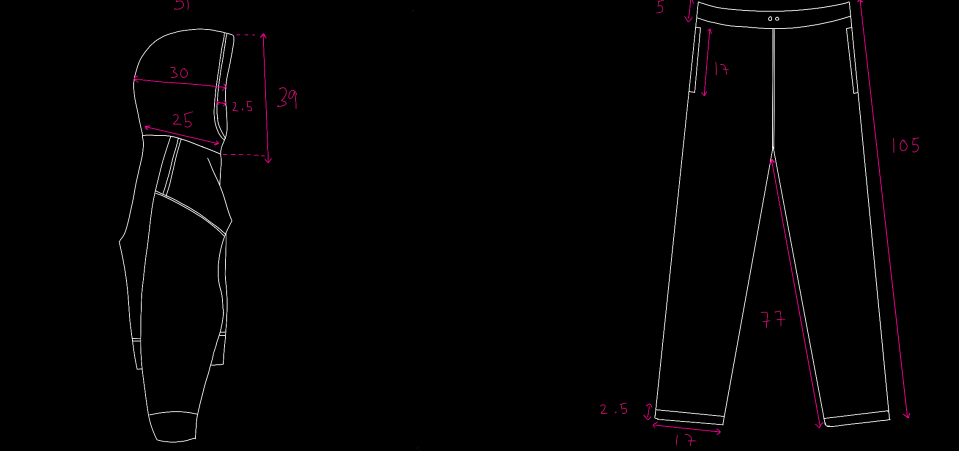How to make Custom Design Pants?
Before we started to make the custom pants sample, there are 14 important details we should all know about it.
When designing or purchasing custom pants, there are several key pieces of information that both the purchaser and the designer (tailor or clothing brand) should be aware of to ensure the perfect fit and style. Here is a comprehensive list of the information needed for custom pants:
1. Measurements:
- Accurate body measurements are crucial. These typically include waist circumference, hip circumference, inseam length, outseam length, thigh circumference, knee circumference, calf circumference, and ankle circumference. Some designers may also ask for rise measurements (front and back) and seat measurements. It can be avoided the unnecessary cost since the sample charge is needed, make sure the size measurements first is the basic movement,then it comes the second part about the logo design part.
2. Style Preferences:
- Discuss the desired style of pants. Are they for formal occasions, casual wear, or specific activities like sports or work? Common styles include dress pants, chinos, jeans, cargo pants, etc. So it is quite important that you need settle the style for your brand image to decide the final design pants.
3. Fabric Selection:
- Choose the type of fabric you prefer. Options may include cotton, wool, linen, denim, synthetic blends, and more. Consider the weight and texture of the fabric as well. which is the important part for showing your design style.
4. Color and Pattern:
– Specify the color or pattern you want for your custom pants. This could be a solid color, pinstripes, checks, or any other pattern you prefer. After you confirmed the design, we prefessional team will make the suitable suggestion based on your logo tech.
5. Fit Preferences:
– Indicate your fit preferences. Do you want a slim fit, regular fit, or a relaxed fit? Mention if you have any specific requirements for how the pants should taper or flare at the ankles.
6. Waistband and Closure:
- Decide on the type of waistband you prefer (e.g., standard, low-rise, high-rise) and the closure method (e.g., button, hook and eye, zipper, drawstring).
7. Pockets and Details:
– Specify the number and type of pockets (front pockets, back pockets, cargo pockets) and any other details you want, such as pleats or cuffs.
8. Length:
- Determine the desired length of the pants. This includes the inseam length, which affects how long the pants are from the crotch to the hem.
9. Special Requirements:
- If you have any specific requirements due to physical characteristics (e.g., longer or shorter legs) or preferences (e.g., no belt loops), communicate these to the designer.
10. Occasion and Season:
- Let the designer know the occasion for which you’ll be wearing the pants and the season or climate they are intended for. This can impact fabric and style choices.
11. Budget:
- Discuss your budget with the designer or salesperson to ensure that the options provided are within your price range.
12. Timeline:
- Provide a timeline if you have a specific event or deadline by which you need the custom pants. This helps with scheduling the tailoring process.
13. Alterations and Fittings:
- Be prepared for fittings and possible alterations during the tailoring process. This ensures that the pants fit perfectly.
14. Additional Preferences:
- Mention any other preferences or requirements you may have, such as the type of stitching, lining, or specific brand labels.
By providing these details, we can work together to create custom pants that meet your exact specifications and expectations. Effective communication is key to achieving the perfect fit and style.Dongguan Bayee Clothing has the professional designer and sales team for your service.
Post time: Sep-07-2023



